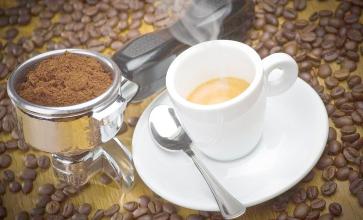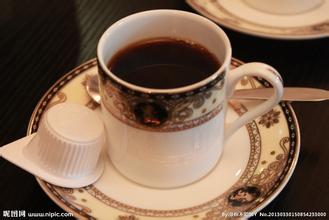Introduction of coffee roasting stage introduction of coffee roaster introduction of roasting degree of different coffee beans
To sum up, coffee roasting is a science. The age, density, hardness and moisture content of raw beans will affect the quality of roasted coffee. Even the relative humidity and temperature on the day of roasting can not be ignored.
Just roasted coffee beans, it is best to leave for 2-5 days, let a large amount of carbon dioxide out of the coffee beans after drinking will be more smooth, Hong Kong coffee will choose an one-way breathable valve aluminum foil bag to preserve coffee beans, can prevent air entry caused by oxidation, but also let carbon dioxide out, ensure that coffee beans remain fresh in the best condition pay attention to changes in color and taste-coffee beans color will continue to heat up From green to light brown, and then a small amount of oil is reddish brown, and then a large number of oil is shiny dark brown. At this point, you can no longer bake, otherwise the coffee oil on the surface of the beans will dry, and there will be a lot of smoke and burning smell. Pay attention to the sound changes-the coffee beans will burst twice during the roasting process, and the first burst sound is lower. It means that at the beginning the starch begins to turn into caramel, and the water evaporates with carbon dioxide. The second burst sound is more violent and sharp, this is the sound of coffee bean cell fiber fracture, at this time should immediately stop heating, and as soon as possible with cold air to lower the temperature of the bean. The time of the first explosion and the second explosion can be very different, so when baking different beans, it is necessary to find out the least carbonization that is most suitable for the bean's baking conditions-during the baking process, some ingredients will also be carbonized off, forming a bad bitter substance, so, when the second explosion is completed, stop heating and reduce the carbonization to the lowest at the same time. Caramelization is an important factor affecting the flavor of coffee. Because raw beans absorb a lot of heat when roasting, there is the first loud sound (1st cracking). At this time, the sugar begins to convert into carbon dioxide, water continues to evaporate, and the aroma of coffee gradually emanates and forms coffee oil. This pyrolysis reaction can last until the second explosion (2nd cracking), but when the second explosion is completed, the temperature of the bean should be lowered with cold air as soon as possible, so that the highest caramelization can be obtained.

Important Notice :
前街咖啡 FrontStreet Coffee has moved to new addredd:
FrontStreet Coffee Address: 315,Donghua East Road,GuangZhou
Tel:020 38364473
- Prev

Cappuccino Coffee Practice Cappuccino Foam Coffee Cappuccino Coffee Machine
Cappuccino coffee tastes good, but its origin is more knowledgeable, and it has always been the best body material for studying text changes in Europe and America. The history of the word Cappuccino is sufficient to show that a word often looks like something and ends up with other meanings cappuccino coffee, far beyond the original intention of the word creator. It sounds complicated. Look.
- Next

The planting technology of coffee the planting environment introduces which country is the most suitable for growing coffee
Field management of loosening soil and weeding: when the seedling height is 3cm to 6cm, the weak or overdense seedlings are pulled out; when the seedling height is 10cm and 13cm, the plant distance is about 30cm. Soil loosening and weeding were carried out at the same time between seedlings and fixed seedlings to keep the soil loose. Coffee beans are more drought-tolerant, and the soil can grow normally when the soil moisture is maintained. During the drought, the coffee beans should be properly watered, but there should be less squatting seedlings during the seedling fixing period.
Related
- Beginners will see the "Coffee pull flower" guide!
- What is the difference between ice blog purified milk and ordinary milk coffee?
- Why is the Philippines the largest producer of crops in Liberia?
- For coffee extraction, should the fine powder be retained?
- How does extracted espresso fill pressed powder? How much strength does it take to press the powder?
- How to make jasmine cold extract coffee? Is the jasmine + latte good?
- Will this little toy really make the coffee taste better? How does Lily Drip affect coffee extraction?
- Will the action of slapping the filter cup also affect coffee extraction?
- What's the difference between powder-to-water ratio and powder-to-liquid ratio?
- What is the Ethiopian local species? What does it have to do with Heirloom native species?

